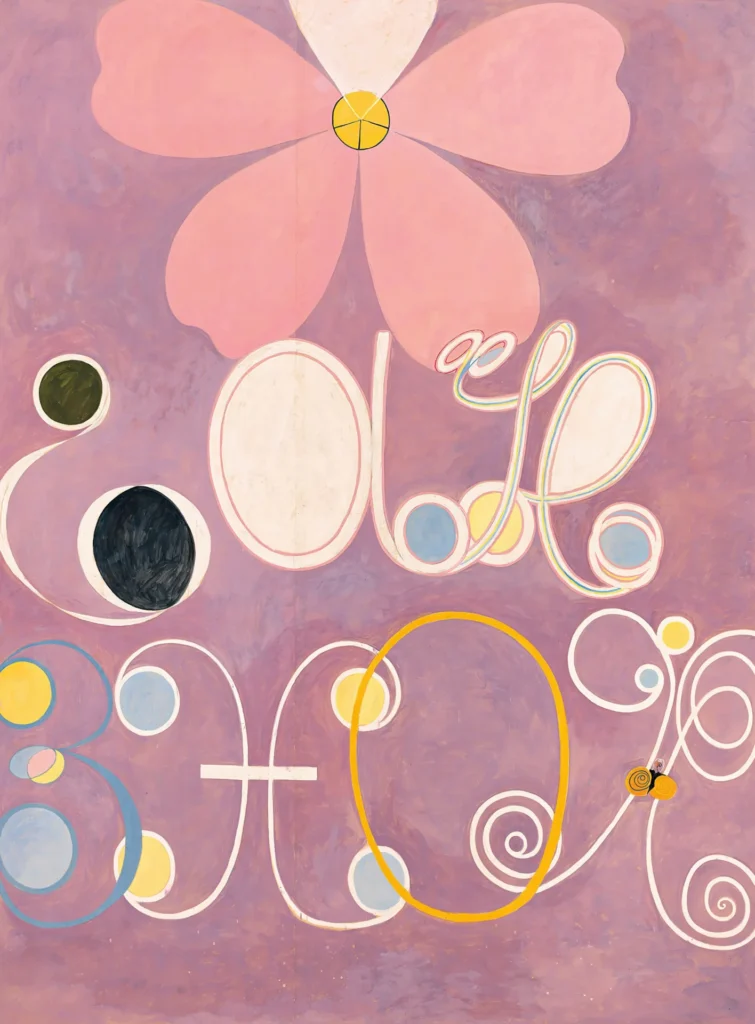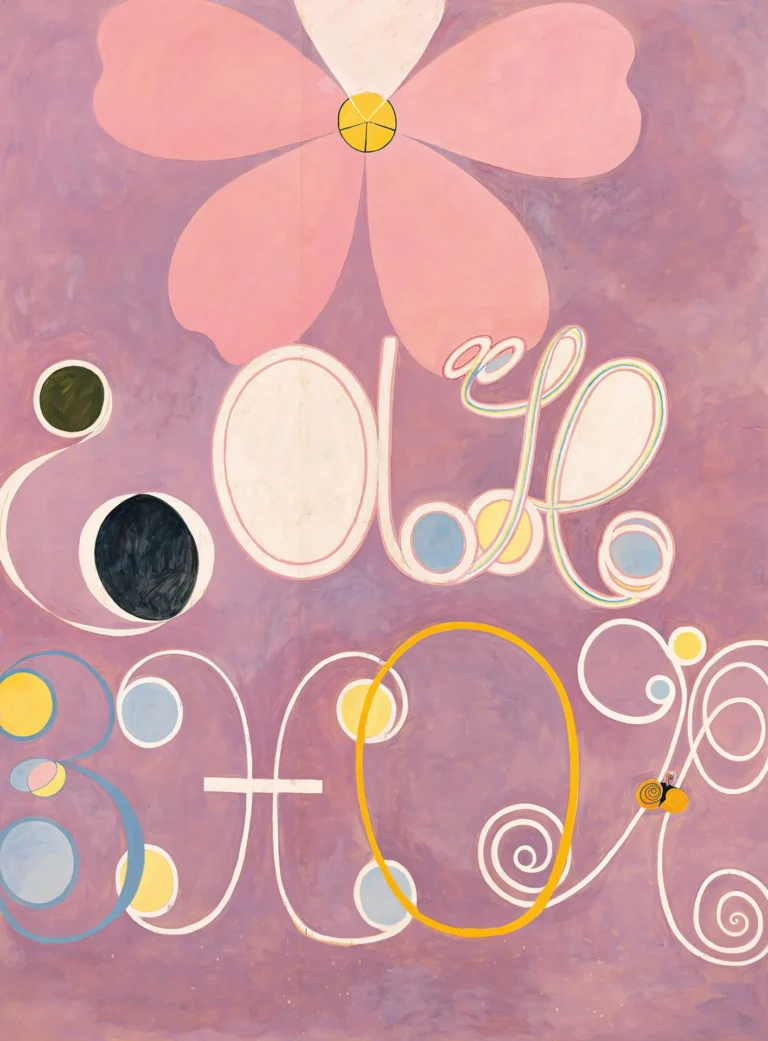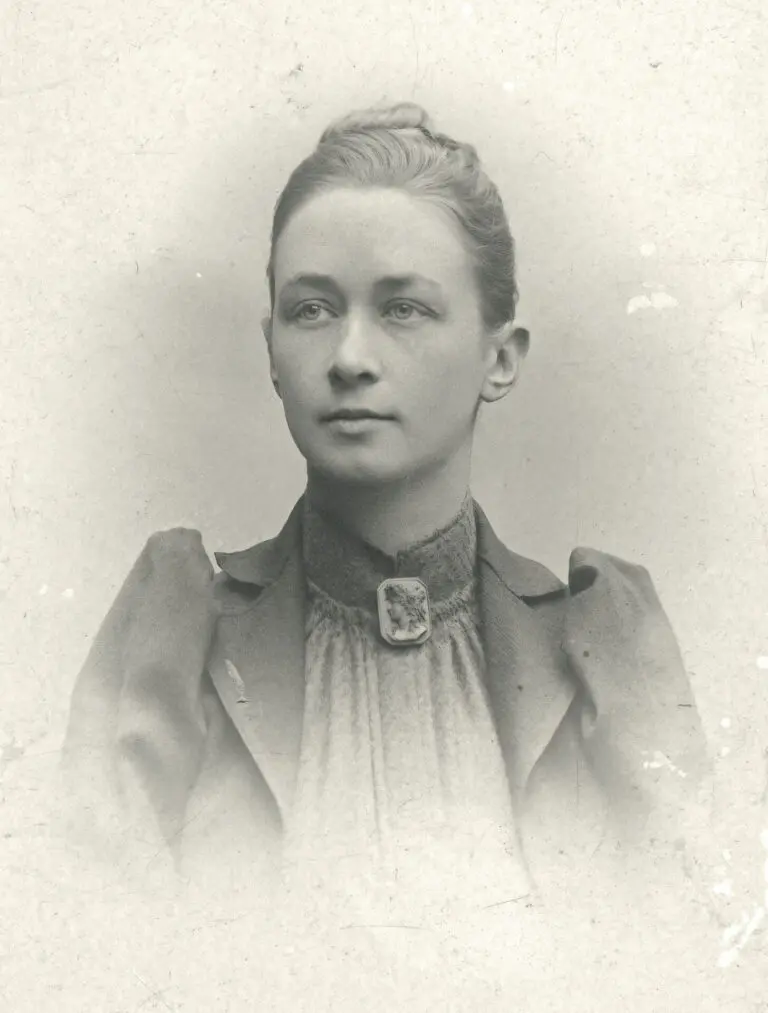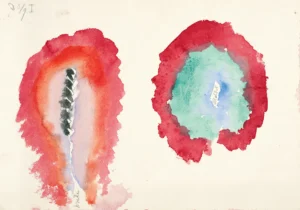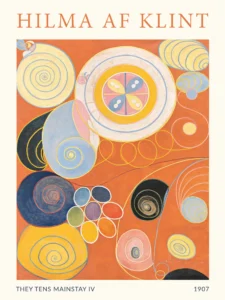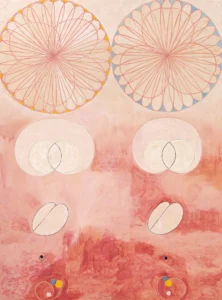The Ten Largest, No. 5, Adulthood (1907)
'The Ten Largest, No. 7, Adulthood' is a striking painting by Hilma af Klint, created in 1907. This piece captures the essence of adulthood through its central yellow bloom-like form, rich in organic shapes and symbols of growth. The background of pale lilac enhances the vibrant colors, creating an atmosphere of vitality and fertility. Af Klint's works are deeply rooted in her spiritual beliefs, as she sought to convey messages from supernatural entities. This painting is part of a larger series that delves into the various stages of human life, showcasing her pioneering vision that predates much of modern abstraction.
1907
About the Artwork
Did You Know
Liked what you see? Add it to your collection.
Enjoyed reading? Share it.
... continued
Series Context
"The Ten Largest" is a series of ten large-scale paintings created by Hilma af Klint in 1907, as part of her broader project "Paintings for the Temple." This series represents the four stages of human life: childhood, youth, adulthood, and old age.
Specific Painting: No. 7, Adulthood
"The Ten Largest, No. 7, Adulthood" is one of the paintings in this series and is specifically focused on the theme of adulthood. The painting features a central yellow subject that resembles a bloom or flower bulb, symbolizing adulthood in full bloom. It includes free-wheeling organic forms of varying sizes and colors against a pale lilac background. The artwork is rich in symbolism, with elements such as snail-shell spirals, shapes reminiscent of cell division, and phases of the moon, all of which represent growth and fertility.
Spiritual and Symbolic Significance
The painting is deeply rooted in af Klint's spiritual and occult practices. She believed that these works were inspired by supernatural entities and were intended to adorn the walls of a theoretical temple.
Size and Technique
Each painting in "The Ten Largest" series measures approximately 3.28 x 2.40 meters, making them monumental and unprecedented in scale for European art at that time. The paintings were executed using egg tempera.
Exhibition and Legacy
These paintings were not publicly displayed during af Klint's lifetime, as per her instructions. They have since been exhibited in various museums, including the Guggenheim, where they have garnered significant attention and acclaim.




